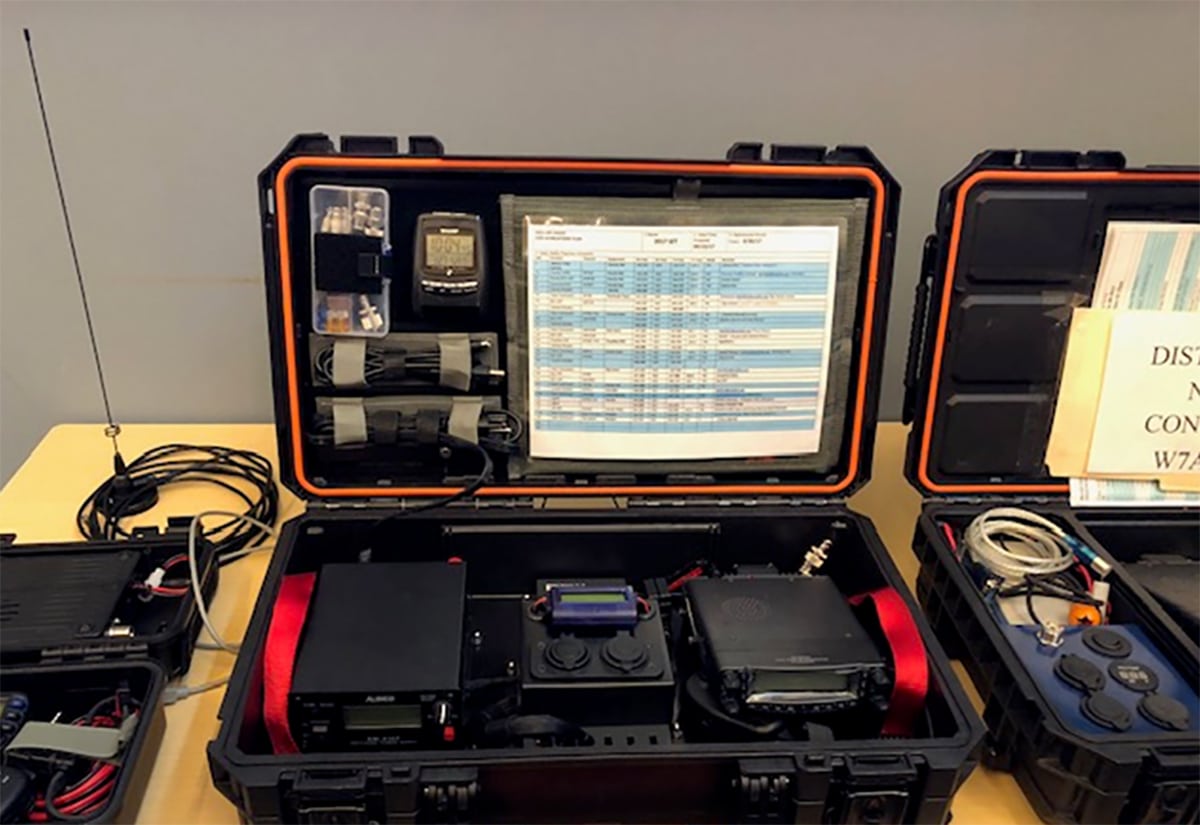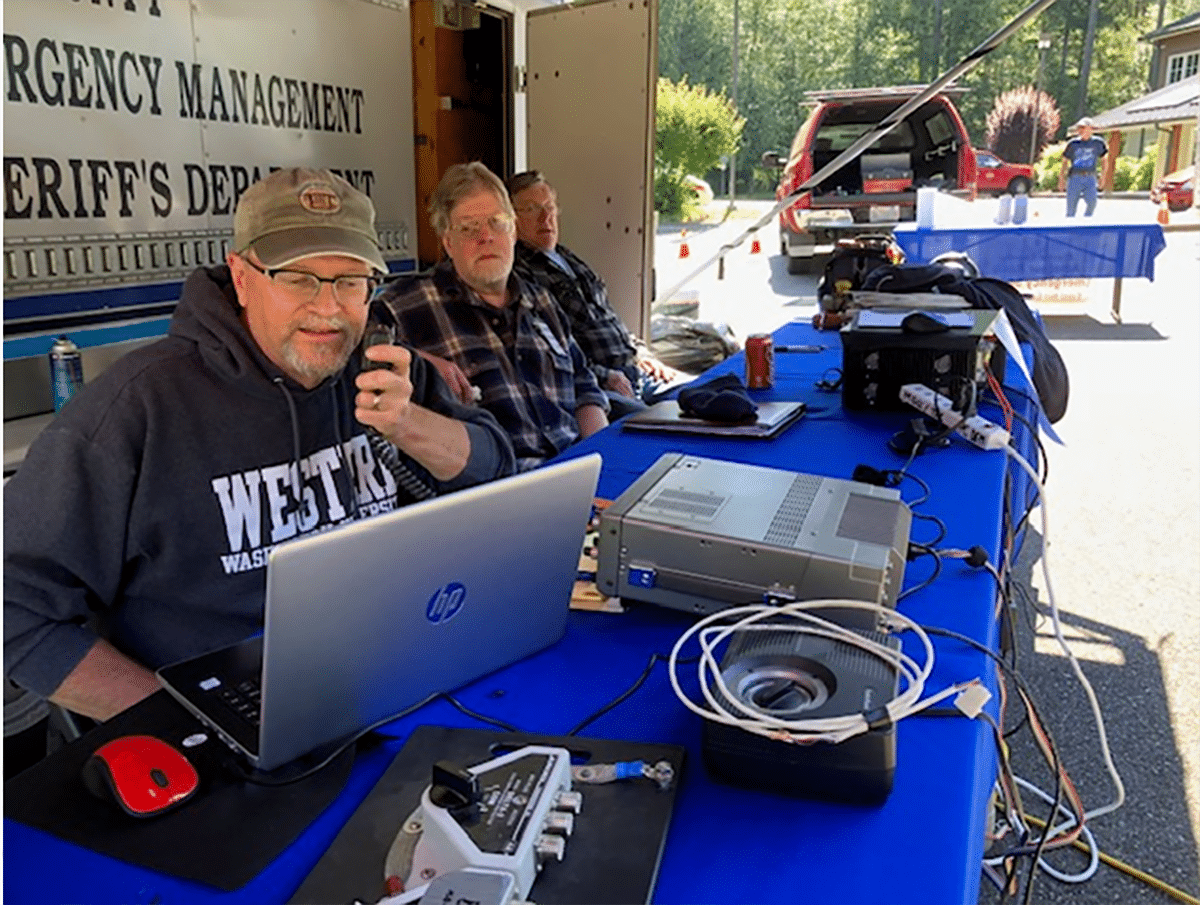Community Police & Fire
Ham radio operators could be key communications link in case of emergency
Ham radios are a way to connect with people over long distances and a hobby for many operators. But in an emergency, they could become essential.
About 488 licensed ham radio operators call the Gig Harbor area home. About 100 of them regularly conduct a network gathering to keep lines of communication open and practice operating their radios.
David Haycock, a licensed operator for many years, is part of the group. He is a member of the Peninsula Emergency Preparedness Coalition (or PEP-C), which focuses on being prepared to act in any emergency situation. It works closely with Pierce County Emergency Management.
Why is it necessary?
During disasters, cell towers might fall and the power grid go dark. Calling 911 might not an option in some cases.
Reliable communication is key to disaster management, Haycock said. That’s why the local group of ham radio operators regularly train for various disaster scenarios and are always recruiting more people to become licensed operators.

Ham radio equipment used during an emergency preparedness scenario. Photo courtesy of David Haycock
Island effect
PEP-C chair Tulli Bookman said the most catastrophic event the region could face is a major earthquake. In a major earthquake, Gig Harbor and the Key Peninsula might not be able to expect a lot of help from the rest of Pierce County.
Gig Harbor and Key Peninsulas make up only about 8% of the county. The region could be difficult to get to after a major quake.
“Geographically, we’re pretty isolated from the mothership,” Bookman said. “We won’t feature high on their radar, because they have to do the most good for the most people.
“My opinion is that Gig Harbor would functionally be an island, with the main artery from East (Highway) 16, and then Gorst from (Bremerton’s Puget Sound) Naval Shipyard very susceptible to damage from earthquakes. The bridges might stand, but on-ramps would likely be damaged. And in Gorst, within 2-3 hours, they would have a 2 to 4 foot sea level rise. We would be cut off from Kitsap and Pierce counties.”
Because of this island effect, every household should have enough supplies on hand to be self-sufficient for at least 30 days, she said.
Communicating with responders
Communication between first responders usually stays within departments — so firefighters talk to firefighters and police talk to police. They have their own communication radios. But, Haycock said, they don’t really communicate much with one another, because they have to stay focused on their own tasks. (911 systems typically handle inter-agency communications.)
That’s one of the places Ham radio operators come in. They can communicate with various agencies through the Amateur Radio Emergency Service, or ARES.
“In a disaster the first thing responders want to know is where to go first,” Haycock said. “You can’t do that if you don’t know what’s on the ground.”
Self-sufficiency
Ham radio is a system that requires very little infrastructure, Bookman said.
Becoming an operator requires a license through the FCC. While there is no minimum age, the training and testing is best suited for those age 12 or older.
Operators need to know the rules around ham radio use and transmit over specific frequencies set aside by the Federal Communications Commission.
Necessary equipment includes a transceiver, a power supply and an antenna.
Operators are prepared to be self-sufficient when at a disaster scene, she said.
“What they do is they have their own rig, batteries, generators, and antennas, and they deploy anywhere,” Bookman said.
They also bring their own food and any other needs so they aren’t a drain on the local area, she said.

Rob Allen, Scott Fritchell and Mike Hancock practice an emergency scenario with ham radio during a drill. Photo courtesy of David Haycock
A ‘vital cog’
It takes a lot of moving parts and agencies to respond to an emergency, but ham radio operators play an important role, they said.
In fact, Bookman said FEMA includes ham radio support in its national incident management system. The federal American Radio Emergency Preparedness Act allows ham radio operators to install outdoor antennas in areas that were previously forbidden by local jurisdictions and homeowners associations.
“We are a vital cog,” Haycock said.
Currently, the local team has repeaters on Cold Mountain, Capital Peak, and at the Purdy Transfer Station. They plan to install more.
“We want to expand and put antennas on fire stations, so we are working with (Fire District) 16 on the Key Peninsula,” Haycock said.
Knowing your community
A key component of emergency preparedness is getting to know your neighbors, they said.
“Weather events come and knock out power, and information can be gone in a moment,” said Dave Jackson, a retired Tacoma firefighter and PEP-C ham radio operator. “We have to depend on each other. We need to start with a plan in your home, then expand out into your neighborhood.”
Identifying people in your community, your neighborhood, who can help in the event of an emergency until first responders can reach you is another way to prepare, Jackson said.
“Is there someone in your neighborhood who has a chainsaw? Is there a nurse who lives next door? Just get to know your neighbors, and have a plan,” Jackson said. “We can solve problems together that we can’t do on our own.”
For more information about PEP-C, to learn how to prepare for an emergency, or to volunteer, visit pep-c.org
For information on ham radio license training contact David Haycock at [email protected] or Dave Jackson at [email protected]

